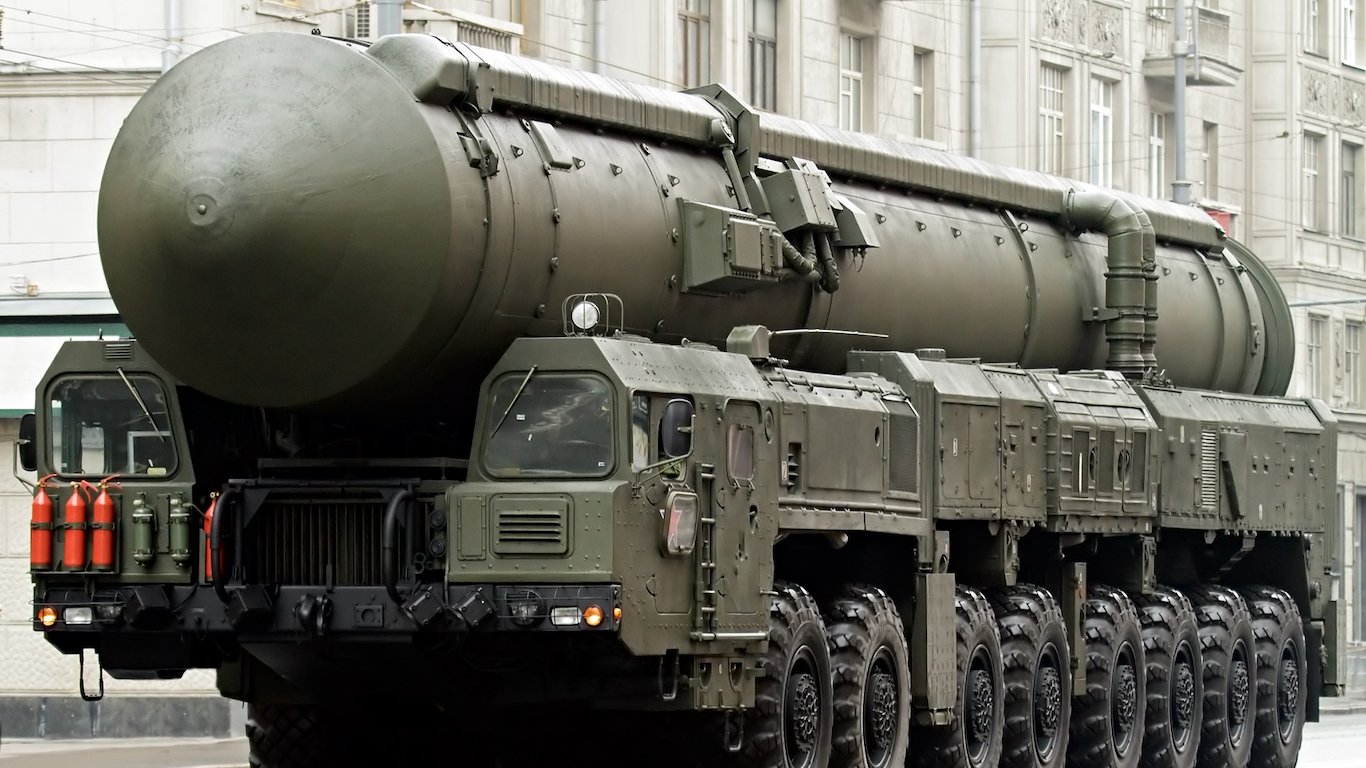

The United States is the only nation to have used nuclear weapons during a war, dropping two atomic bombs on Japan in 1945 that likely hastened the surrender of Japan to end World War II, the most expensive war in U.S. history. The American nuclear monopoly did not last long. Four years later, the Soviet Union detonated its first atomic device, and the race was on for nuclear weapon supremacy between the Cold War adversaries.
Since 1949, the Earth has been living under a nuclear Damocles sword, and according to historians, the world could have ended on several occasions. Fortunately for humankind, rationality prevailed. The United States and the Soviet Union, which between them have 92% of the world’s nuclear weapons, took measures to avoid atomic Armageddon, with various disarmament treaties beginning with the Partial Test Ban Treaty in 1963 followed by the Strategic Arms Limitation Talks (SALT), the Anti-Ballistic Missile Treaty (ABM), and the Strategic Arms Reduction Treaty (START).
Despite the treaties, the world remains a dangerous place as other nations have joined the nuclear club. At least nine countries now have nuclear weapons. Two others — Iran and Syria — might have them or soon will.
South Africa built six nuclear weapons in the 1980s but chose to dismantle them in the 1990s, the only country so far to end its nuclear program. Even though some nations possessing nuclear weapons have been reducing their inventories, all the nuclear weapon-possessing countries are developing new nuclear weapon systems and modernizing their existing ones.
Using data provided by the Stockholm International Peace Research Institute, or SIPRI, 24/7 Wall St. reviewed the nine countries with the largest nuclear stockpiles and the two that may be on the brink of developing nuclear capabilities. Most nations do not publicize the exact figures of their nuclear weapons inventories, so some SIPRI figures are estimates based on expert analysis.
In 2018, world military expenditures reached $1.8 trillion, according to the Stockholm International Peace Research Institute (SIPRI). The United States spends $649 billion on the military, or 36% of the world’s total, the most of any nation, according to SIPRI.
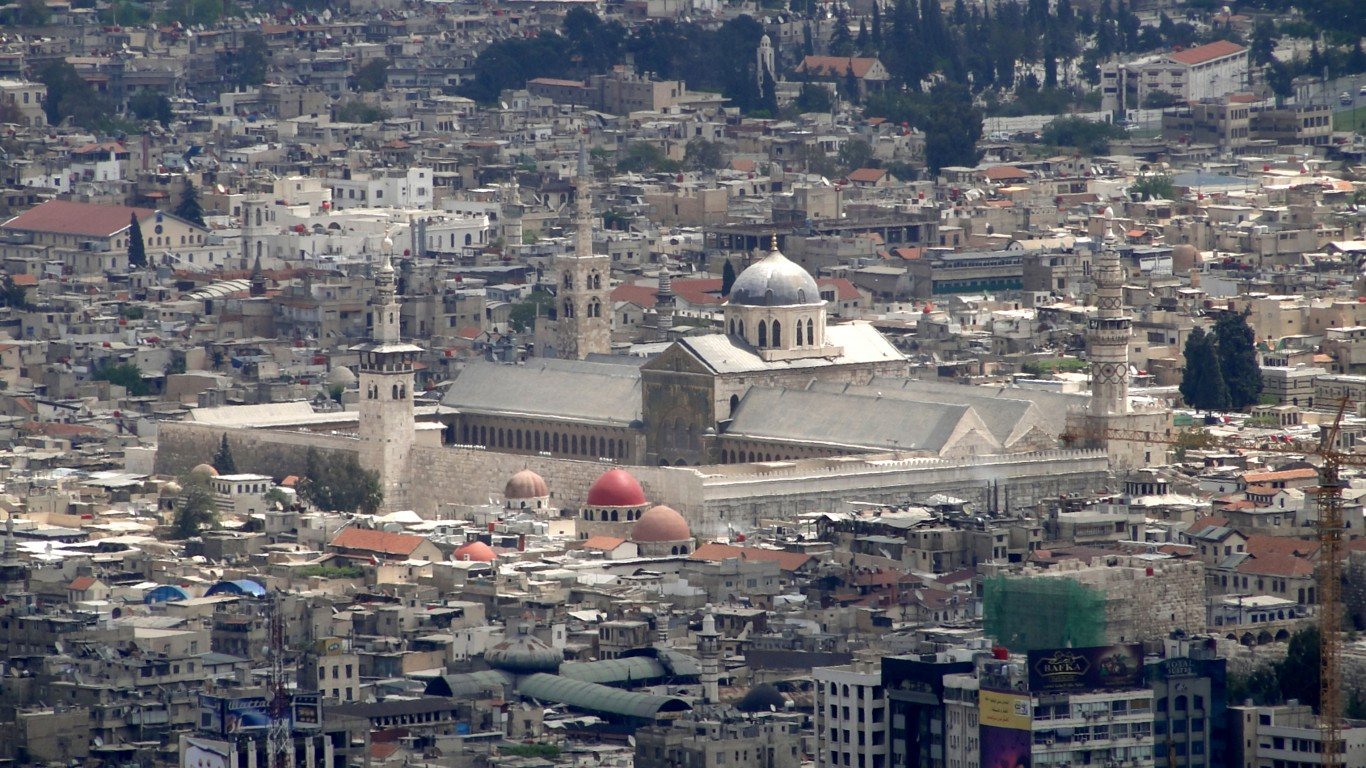
11. Syria
> Nuclear stockpile: N/A
> Year of first nuclear test: N/A
> Annual military spending: N/A
> GDP: $40.4 billion
Syria is a non-nuclear weapon-nation with a chemical weapons program. It is also suspected of having a biological weapons capability. In the past, the country has shown interest in acquiring nuclear capability. That led to the destruction of its suspected Al-Kubar nuclear facility by Israel in 2007. Syria still poses a risk of nuclear proliferation, though the civil war that has ravaged the country since 2011 has limited its weapons capabilities, including reducing its short-range ballistic and cruise missile inventory.
[in-text-ad]

10. Iran
> Nuclear stockpile: N/A
> Year of first nuclear test: N/A
> Annual military spending: N/A
> GDP: $454.0 billion
Aided by its former ally — the United States — Iran has been developing nuclear technology since the 1950s. That assistance ended after the Iranian Revolution in 1979, but Iran continued to develop its nuclear energy program and bolster its enrichment capabilities.
Concern over Iran’s nuclear weapons intentions intensified after 2003, and as a result, the U.N. security council voted on sanctions in 2006. In 2015, Iran agreed to reduce the number of its centrifuges by two-thirds, ban enrichment at certain facilities, and limit uranium research and development in exchange for relief from the sanctions. Three years later, President Donald Trump withdrew the United States from the agreement and reimposed sanctions against the regime, claiming Iranian support for terrorism justifies the withrdrawal.

9. North Korea
> Nuclear stockpile: 10-20 (estimate)
> Year of first nuclear test: 2006
> Annual military spending: N/A
> GDP: N/A
The true extent of North Korea’s nuclear program continues to be elusive because the nation is a closed society. Its nuclear weapons ambitions are the centerpiece of its national security and a threat to South Korea. It is estimated that North Korea may have as many as 20 nuclear weapons.
In 2016, North Korea said it was producing highly enriched uranium (HEU) for nuclear weapons. On Sept. 3, 2017, the country conducted its sixth nuclear test explosion at the Punggye-ri underground test site and announced this was a successful test of a hydrogen bomb, though the scientific community was skeptical of this. North Korea is also expanding and modernizing its ballistic missile force and a submarine-launched ballistic missile (SLBM) capabilities. Korean leader Kim Jong Un and Trump have discussed denuclearization of the peninsula during two summit meeting within the last year.
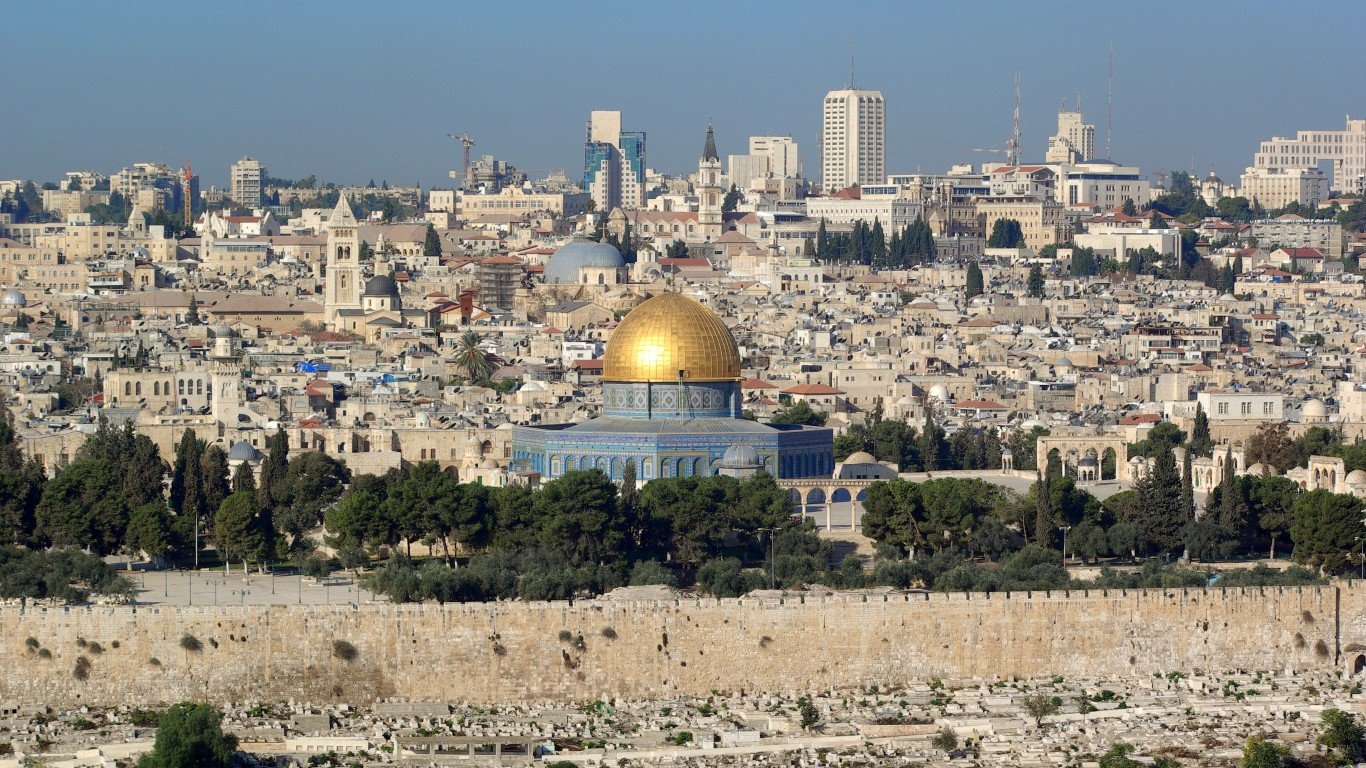
8. Israel
> Nuclear stockpile: 80 (estimate)
> Year of first nuclear test: N/A
> Annual military spending: $15.9 billion (17th most)
> GDP: $353.3 billion
Israel will neither confirm nor deny the existence of a nuclear arsenal, and it will not acknowledge having conducted a nuclear test. The Middle Eastern nation has not signed the Treaty on the Non-Proliferation of Nuclear Weapons. Even so, SIPRI estimates Israel has about 80 nuclear weapons. Several bunkers believed to contain about 30 nuclear bombs for delivery by combat aircraft are located at an airbase south of Tel Aviv, according to SIPRI, with the remaining 50 weapons poised for delivery by land-based ballistic missiles.
[in-text-ad-2]
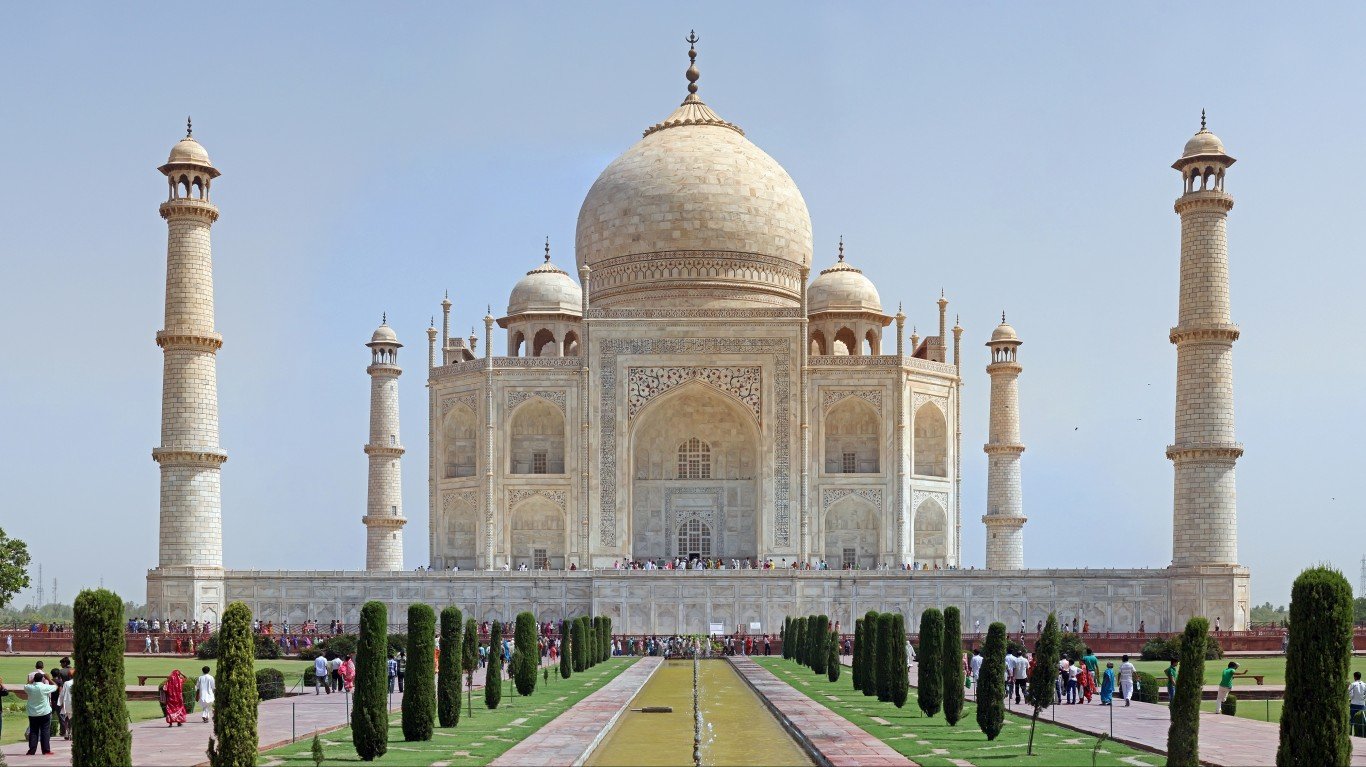
7. India
> Nuclear stockpile: 130-140
> Year of first nuclear test: 1974
> Annual military spending: $66.5 billion (fourth most)
> GDP: $2.65 trillion
India makes public announcements about its nuclear tests but does not provide information about its nuclear inventory. India and Pakistan have had a tense relationship — since the two nations became independent in 1947 they have fought three wars, though none of the conflicts has escalated into a nuclear war. The two nations, nevertheless, are in a nuclear arms race.
India conducted its first nuclear weapons test in 1974 and is believed to have as many as 140 nuclear weapons. India has declared a policy of no first use, and claims that its nuclear arsenal is solely a deterrent. According to SIPRI, India is expanding its nuclear arsenal and capacity for building nuclear warheads. The country is also building the naval portion of its nuclear triad (land, air, and sea) by adding to its nuclear-powered ballistic missile submarines. India has not signed the 1968 Treaty on the Non-Proliferation of Nuclear Weapons

6. Pakistan
> Nuclear stockpile: 140-150
> Year of first nuclear test: 1998
> Annual military spending: $11.4 billion (20th most)
> GDP: $304.9 billion
Pakistan, which has been in conflict with India since the two countries became independent in 1947, is prioritizing the development and deployment of nuclear weapons. SIPRI estimates that Pakistan has up to 150 nuclear warheads. Pakistan conducted its first nuclear weapons test in 1998.
While India has adopted a no first-use doctrine and intends to only deploy nuclear weapons in retaliation to a nuclear attack, Pakistan has not. Pakistan’s weapons are intended to be used in a first-strike capacity against non-nuclear forces. Pakistan’s arsenal includes nuclear-capable short-range missiles that analysts believe are meant for small-scale conflict against conventional forces. Pakistan is also augmenting its sea-based nuclear capability to match India’s nuclear triad. Like India, Pakistan has not signed the 1968 Treaty on the Non-Proliferation of Nuclear Weapons.
[in-text-ad]
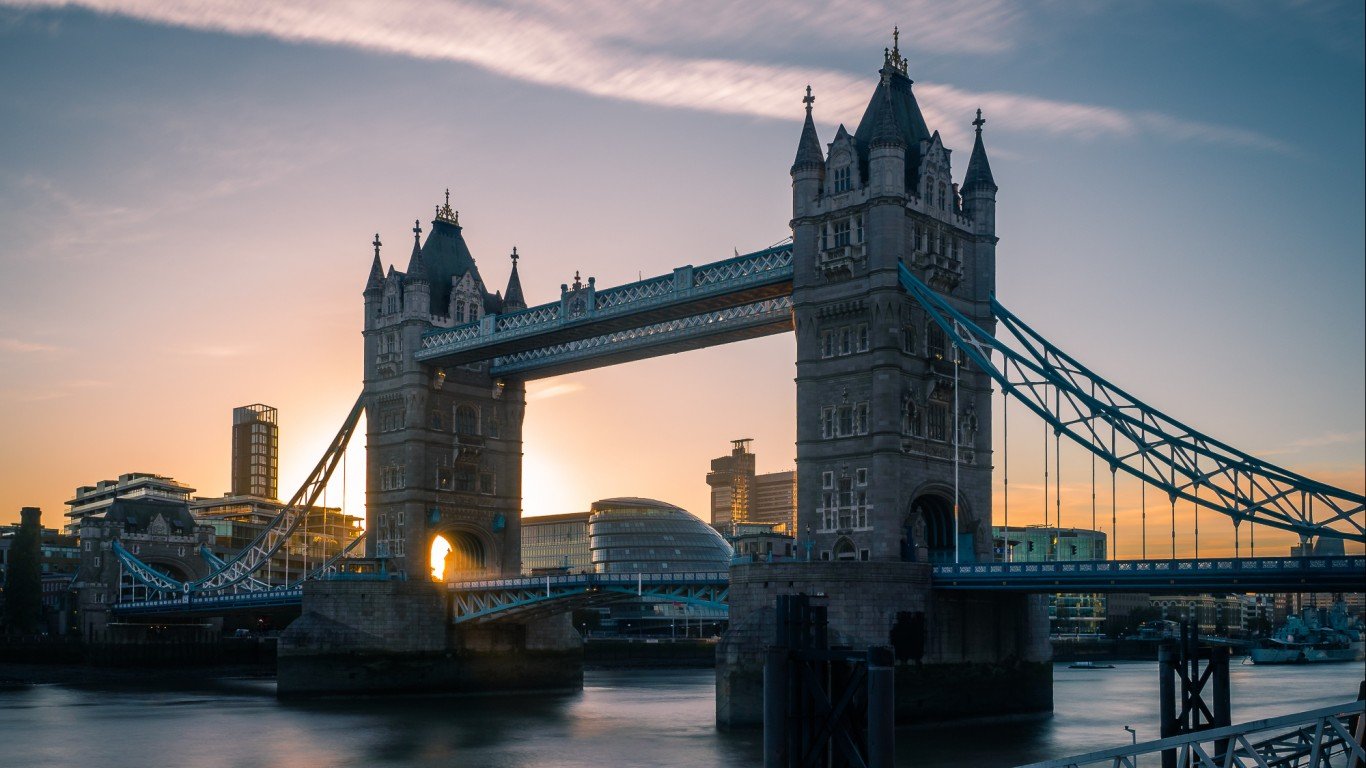
5. United Kingdom
> Nuclear stockpile: 215
> Year of first nuclear test: 1952
> Annual military spending: $50.0 billion (seventh most)
> GDP: $2.63 trillion
The United Kingdom, which became the third nuclear power-nation in 1952, once had one of the largest nuclear stockpiles in the world. Today, the U.K. is reducing its nuclear inventory and has about 215 warheads. Its goal is to downsize its arsenal to as low as 180 by the mid-2020s. The British nuclear deterrent consists entirely of a sea-based force of four Vanguard class Trident nuclear-powered ballistic missile submarines (SSBNs)
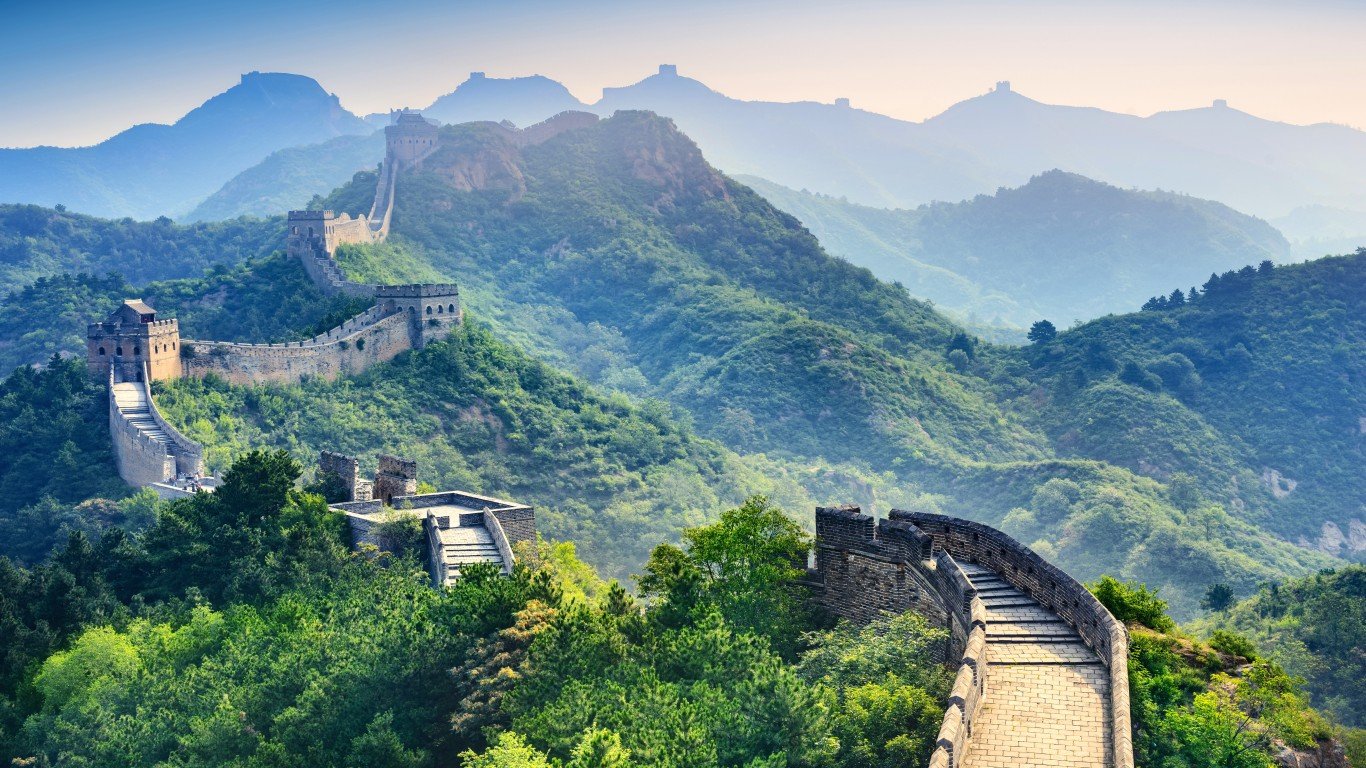
4. China
> Nuclear stockpile: 280
> Year of first nuclear test: 1964
> Annual military spending: $250.0 billion (second most)
> GDP: $12.23 trillion
China conducted its first nuclear weapons test in 1964 and is today believed to have an arsenal of about 280 warheads. Of the total number of nuclear warheads, about 234 are land- and sea-based ballistic missiles.
The world’s most populous nation is modernizing and increasing the size of its nuclear stockpile, including its inventory of intercontinental ballistic missiles. China’s push to improve the quality of its weapons systems is in response to the ballistic missile defenses and precision-guided conventional strike systems that the United States is deploying. China has emphasized its commitment to minimum deterrence and a no first-use policy.
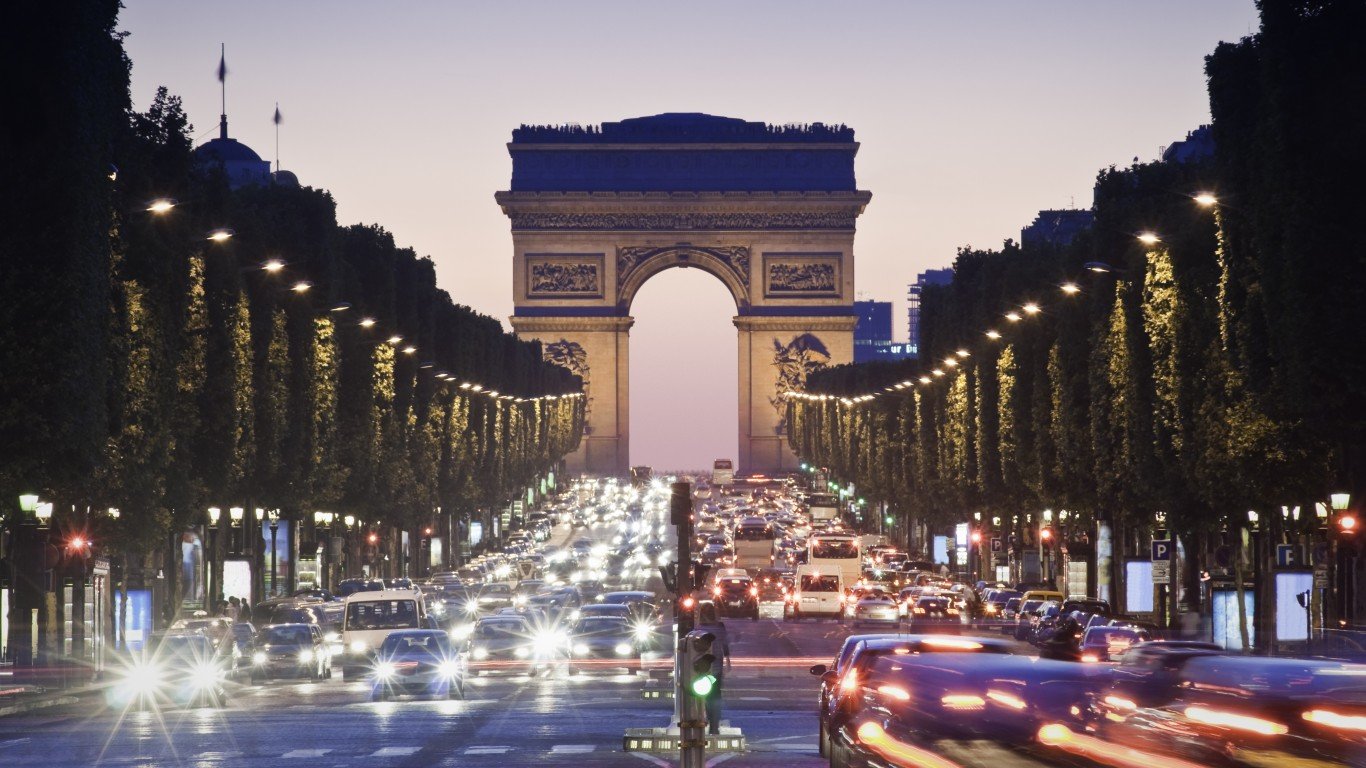
3. France
> Nuclear stockpile: 300
> Year of first nuclear test: 1960
> Annual military spending: $63.8 billion (fifth most)
> GDP: $2.58 trillion
In 1960, France became the fourth country to test a nuclear weapon, and today it has a stockpile of about 300 warheads, the largest arsenal of any country other than the United States and Russia. The main aspect of France’s nuclear weapons capability is its fleet of four nuclear-powered ballistic missile submarines, which entered service in 1997. One of these submarines is on patrol at all times.
Since the late 1980s, France has been gradually reducing its nuclear capability. The country dismantled its nuclear test site in the South Pacific by 1998 and has eliminated all land-based weapons from its nuclear arsenal.
[in-text-ad-2]
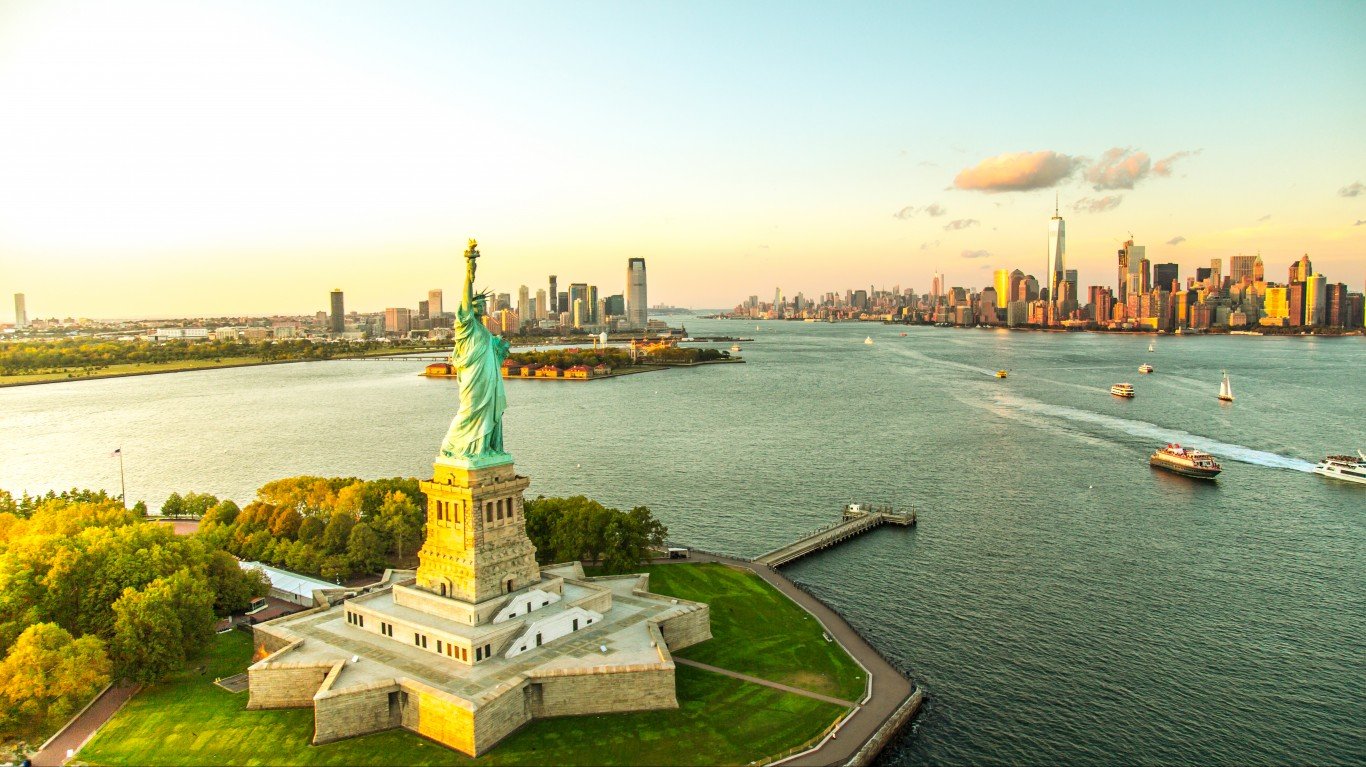
2. United States
> Nuclear stockpile: 6,450
> Year of first nuclear test: 1945
> Annual military spending: $649.0 billion (most)
> GDP: $19.48 trillion
The United States was the first country to build nuclear weapons and remains the only nation to use an atomic weapon during wartime. When the Soviet Union detonated an atomic bomb in 1949, that ushered in an arms race between the Cold War opponents. At its peak in 1967, the United States had amassed 31,255 active warheads.
Since that time, the United States has dismantled the majority of its weapons. Today, the U.S. military has about 6,450 nuclear warheads. The United States is reducing warheads in accordance with the 2010 New START treaty. According to SIPRI, the United States has begun a nuclear modernization program that aims to replace or upgrade its land-, sea- and air-based nuclear weapons systems.

1. Russia
> Nuclear stockpile: 6,850
> Year of first nuclear test: 1949
> Annual military spending: $61.4 billion (sixth most)
> GDP: $1.58 trillion
By 1986, the Soviet Union had an estimated 45,000 warheads stockpiled. After the Soviet Union had broken apart in 1991, its nuclear weapons were distributed among several of the new republics, including Kazakhstan and Ukraine, but were believed to be consolidated in Russia by 1996. Since then, Russia has been involved in a global process of disarmament. SIPRI estimates the country has about 6,850 warheads.
The reduction in Russia’s deployed strategic warheads is in accordance with the 2010 New START treaty. The U.S. Air Force’s National Intelligence and Space Center estimates that Russia’s ICBM force will continue to decrease because of arms control agreements and the retirement of aging missiles.
ALERT: Take This Retirement Quiz Now (Sponsored)
Take the quiz below to get matched with a financial advisor today.
Each advisor has been vetted by SmartAsset and is held to a fiduciary standard to act in your best interests.
Here’s how it works:
1. Answer SmartAsset advisor match quiz
2. Review your pre-screened matches at your leisure. Check out the advisors’ profiles.
3. Speak with advisors at no cost to you. Have an introductory call on the phone or introduction in person and choose whom to work with in the future
Take the retirement quiz right here.
Thank you for reading! Have some feedback for us?
Contact the 24/7 Wall St. editorial team.
 24/7 Wall St.
24/7 Wall St. 24/7 Wall St.
24/7 Wall St.
